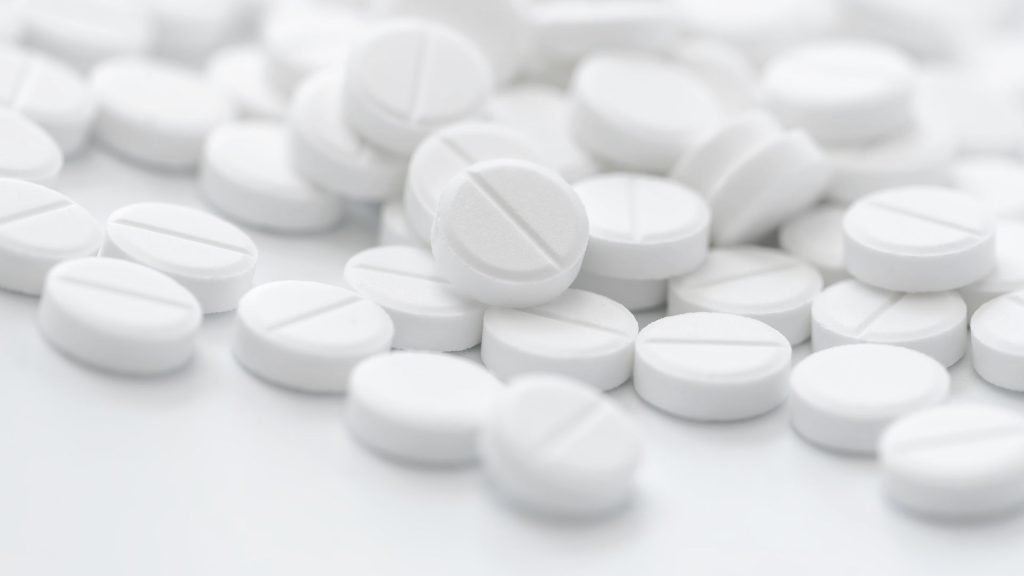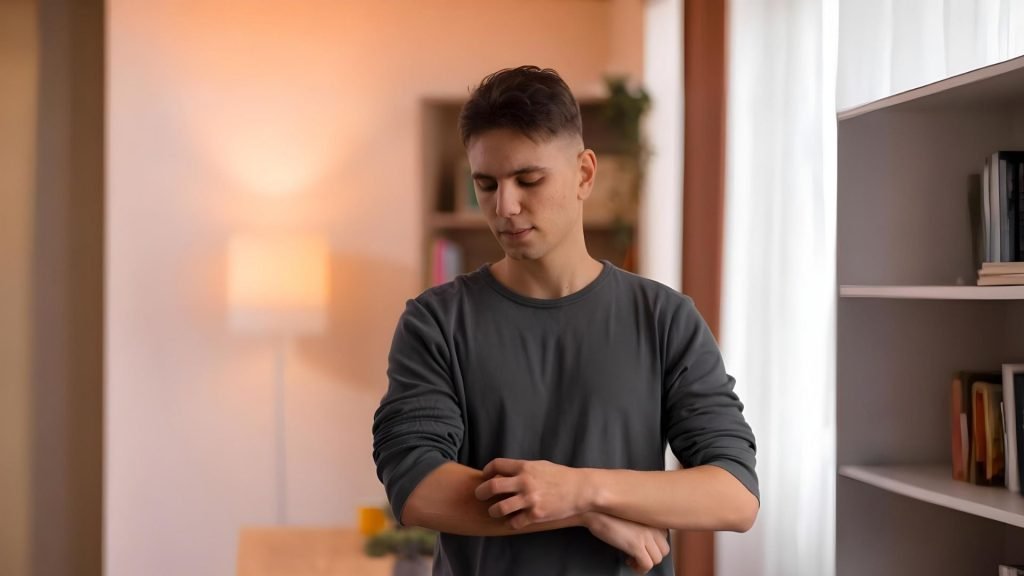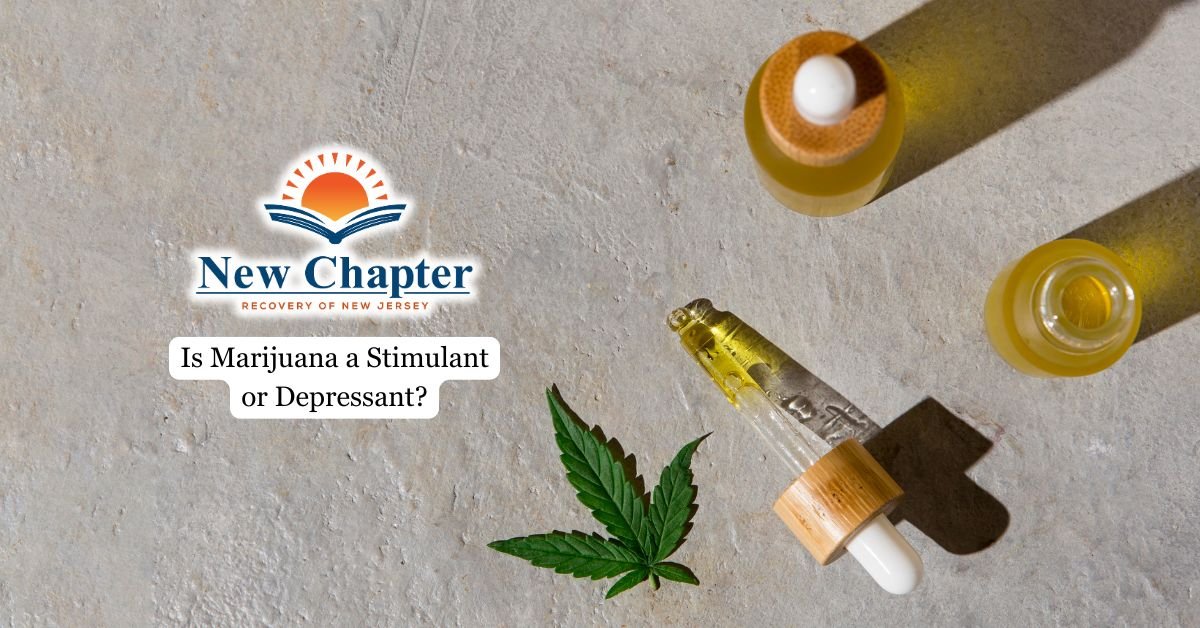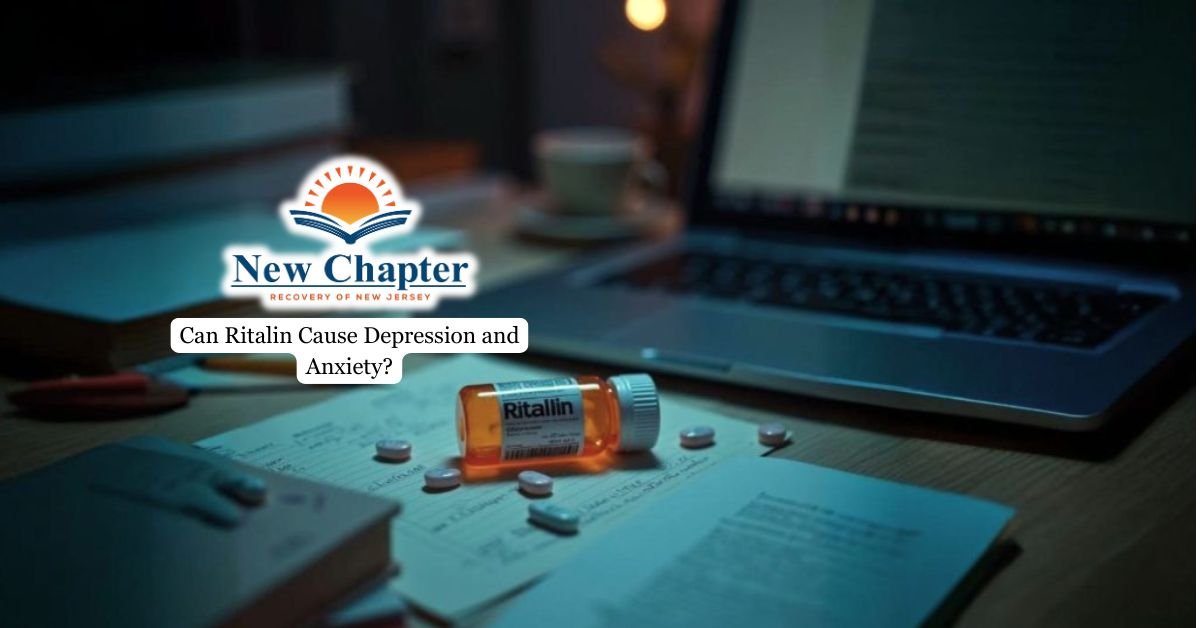Itching is a frequently reported adverse effect of oxycodone, a potent opioid analgesic used to relieve severe and intense pain, and can affect a substantial proportion of individuals who use this medication. Aside from itching, rashes are another side effect of taking oxycodone.
This article will explain the underlying mechanisms responsible for this symptom and describe effective management strategies that are essential for optimizing patient comfort and treatment outcomes.

Why Does Oxycodone Cause Itching?
Opioid-induced itching is a common side effect attributed to oxycodone’s interaction with the central nervous system and its ability to stimulate the release of histamine from mast cells.
Using opioids like oxycodone (popularly sold under the brand names OxyContin and Roxicodone, among others) activates specific receptors in your spinal cord that transmit itch sensations to your brain. It also stimulates mast cells to release histamine, a chemical that can trigger itching and mild skin reactions.
This reaction may be more pronounced in people who are new to opioids or those taking higher doses, as the body hasn’t built any tolerance to these side effects yet.
This type of itching is usually not a true allergic reaction to oxycodone but rather a pseudoallergy caused by direct mast cell activation. While the exact mechanisms are complex, understanding why using oxycodone causes itching can help you and your healthcare provider manage this symptom effectively, whether through topical creams, antihistamines, or exploring alternative pain management options.
In some cases, switching to a different opioid or using medications that block the specific receptors involved, like nalbuphine or low-dose naltrexone, can significantly reduce or eliminate the itching. Staying hydrated and avoiding hot showers, which can worsen the itchiness due to histamine release, might also provide relief.
It’s also important to remember that oxycodone has a high potential for addiction due to its euphoric effects, especially when misused or taken long-term. Enrolling in a trusted OxyContin Addiction Rehab can be a critical step toward recovery and long-term wellness.
How Common is Itching With Oxycodone?
Severe itching due to oxycodone is a frequent side effect reported by many people.
Routine laboratory studies suggest that opioid use may cause anywhere from 30%–100% of patients to experience some degree of itching, though the exact rate for oxycodone specifically may be somewhat lower compared to morphine or codeine.
The high prevalence of opioid-induced itching underscores the importance of being aware of this potential side effect and discussing pain relief and coping strategies with your healthcare provider.
While the severity of itching can vary from person to person, it is rarely life-threatening and a common enough issue that patients should be prepared for the possibility and know when to seek medical attention if needed.

How to Manage Oxycodone Itching
By recognizing the distinction between typical or severe opioid-induced itching and signs of a true allergic reaction, healthcare providers and patients can work together to ensure safe and effective pain management.
While oxycodone-induced itching can be uncomfortable and frustrating, there are several strategies you can use to manage this common side effect.
Over-the-counter antihistamines like diphenhydramine or hydroxyzine may provide relief from itchiness due to oxycodone use, though they aren’t always effective and can cause drowsiness.
Topical creams containing menthol or capsaicin can help soothe itchy skin. If itching is severe or persistent, your doctor may prescribe medications that target specific itch pathways, such as naloxone or nalbuphine.
However, these drugs can also reduce oxycodone’s pain-relieving effects. In some cases, switching to a different opioid or non-opioid pain medication may be necessary.
Always consult your healthcare provider before making any changes to your treatment plan or if itching is accompanied by signs of an allergic reaction. If you’re experiencing itching, talk to your doctor about management strategies. They may suggest antihistamines, opioid rotation, or other approaches to help you find relief.
Final Thoughts From New Chapter Recovery
Our team of experienced medical professionals, licensed therapists, and certified counselors at New Chapter Recovery works together to provide personalized care every step of the way. From detox to aftercare, our blend of faith-based and traditional therapeutic options allows clients to choose a path that aligns with their values and personal beliefs. Our approach to treatment is both compassionate and comprehensive, addressing not only the individual but also the family unit as a whole.






